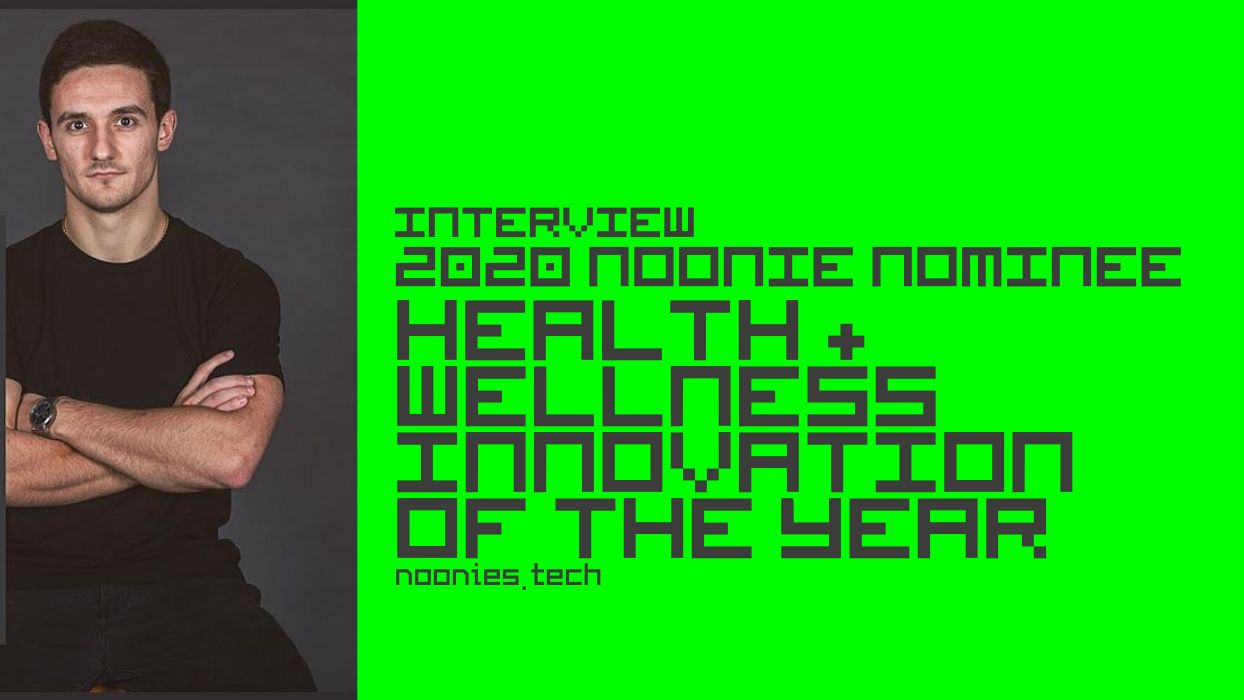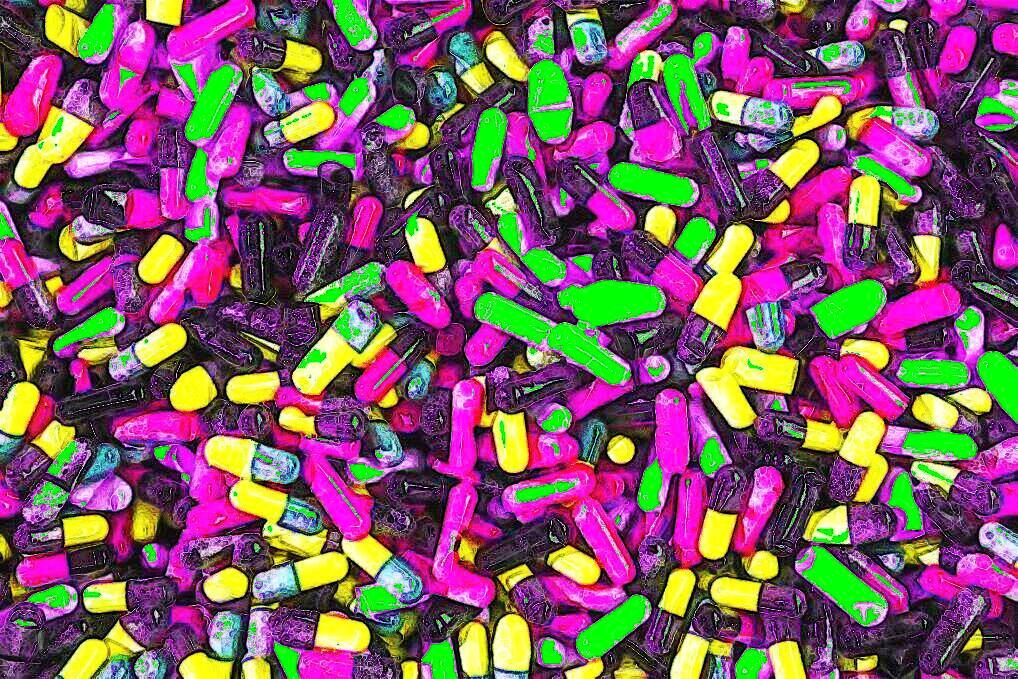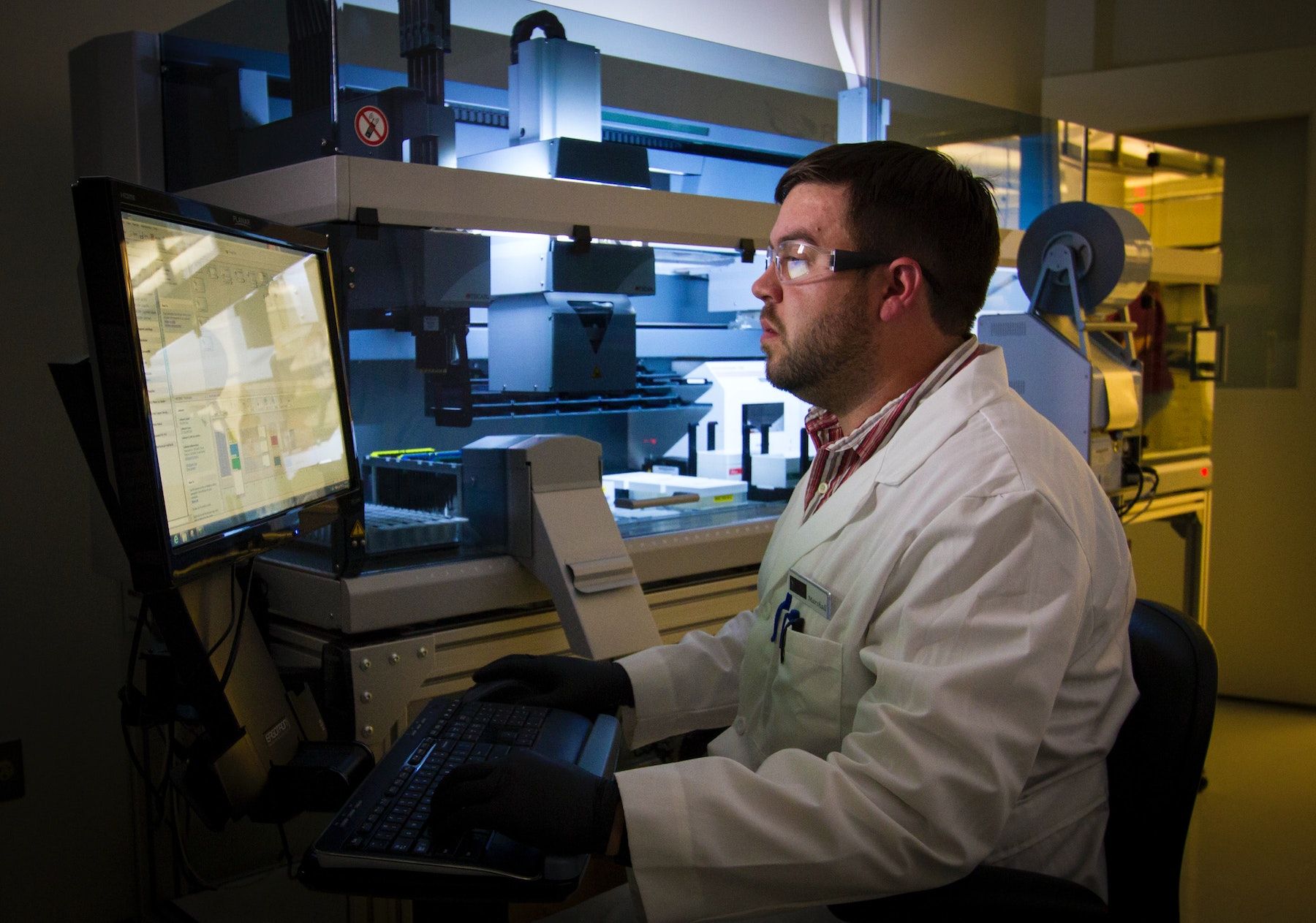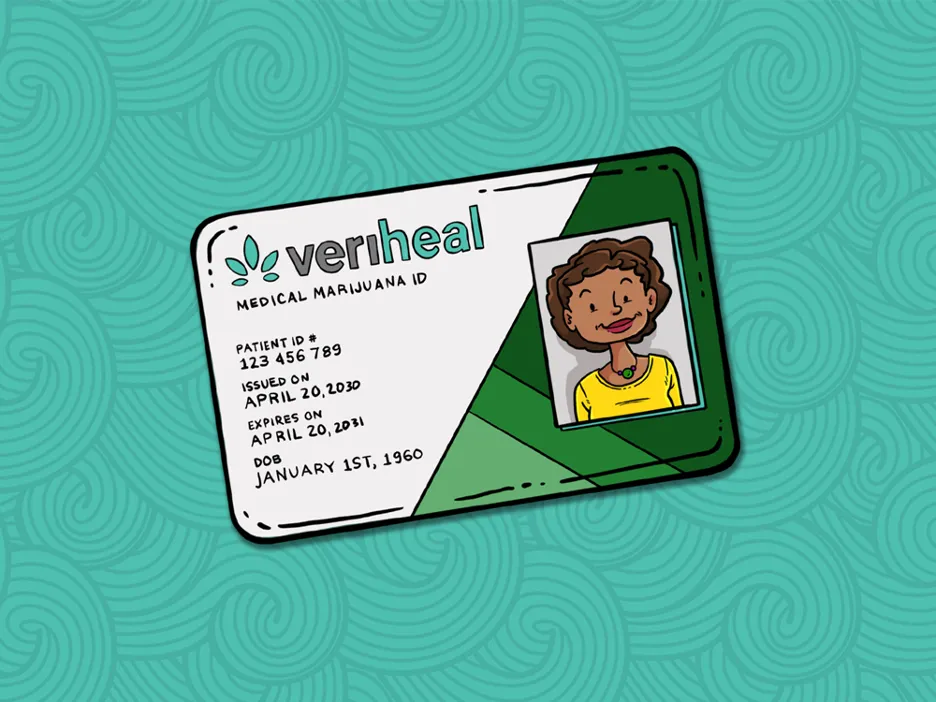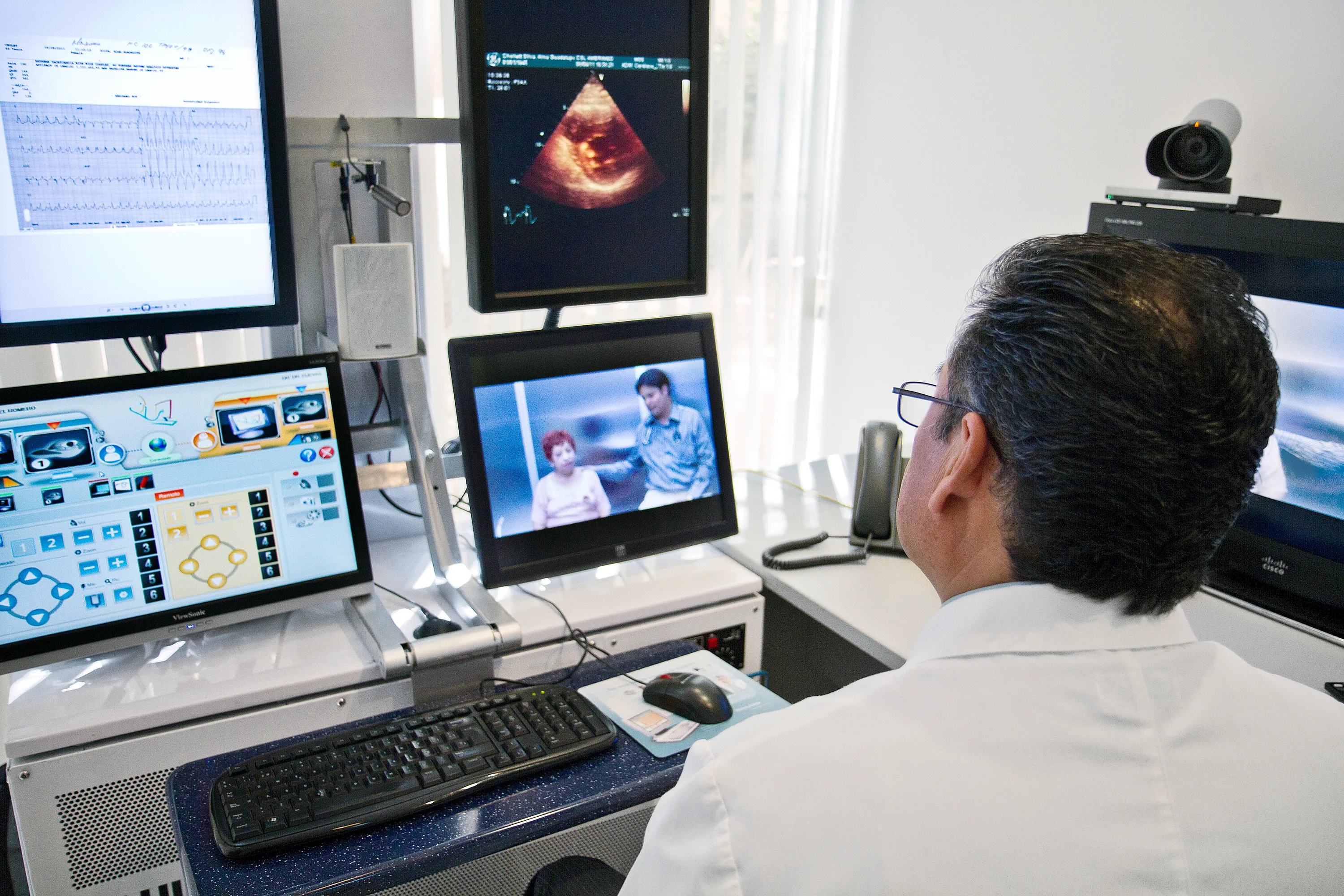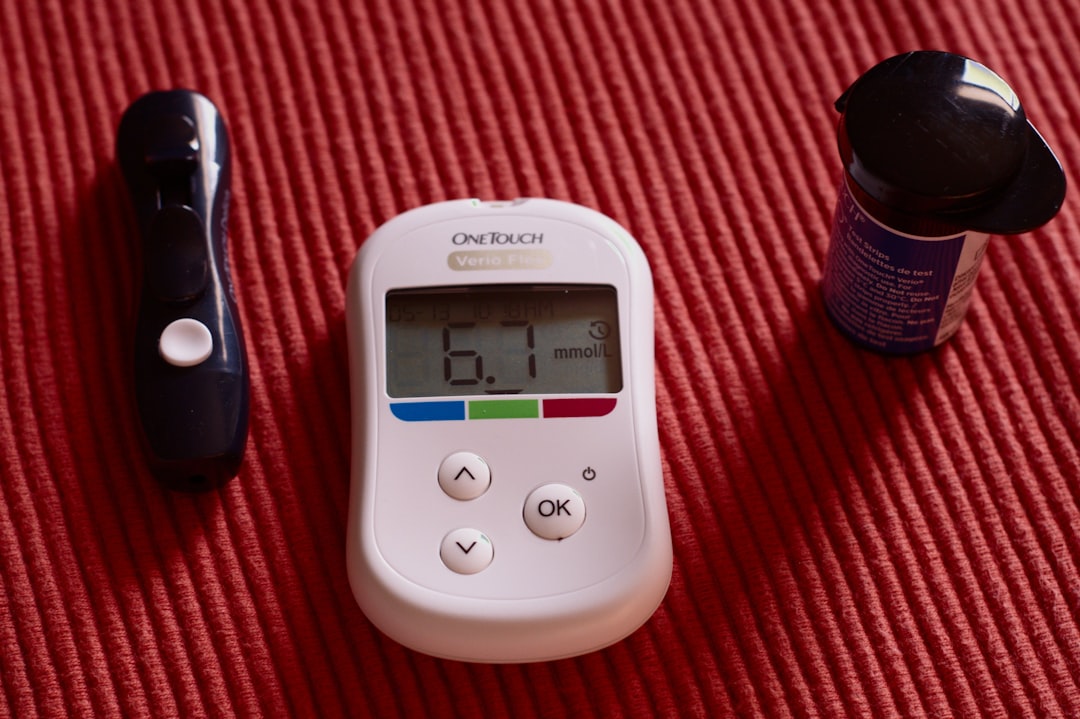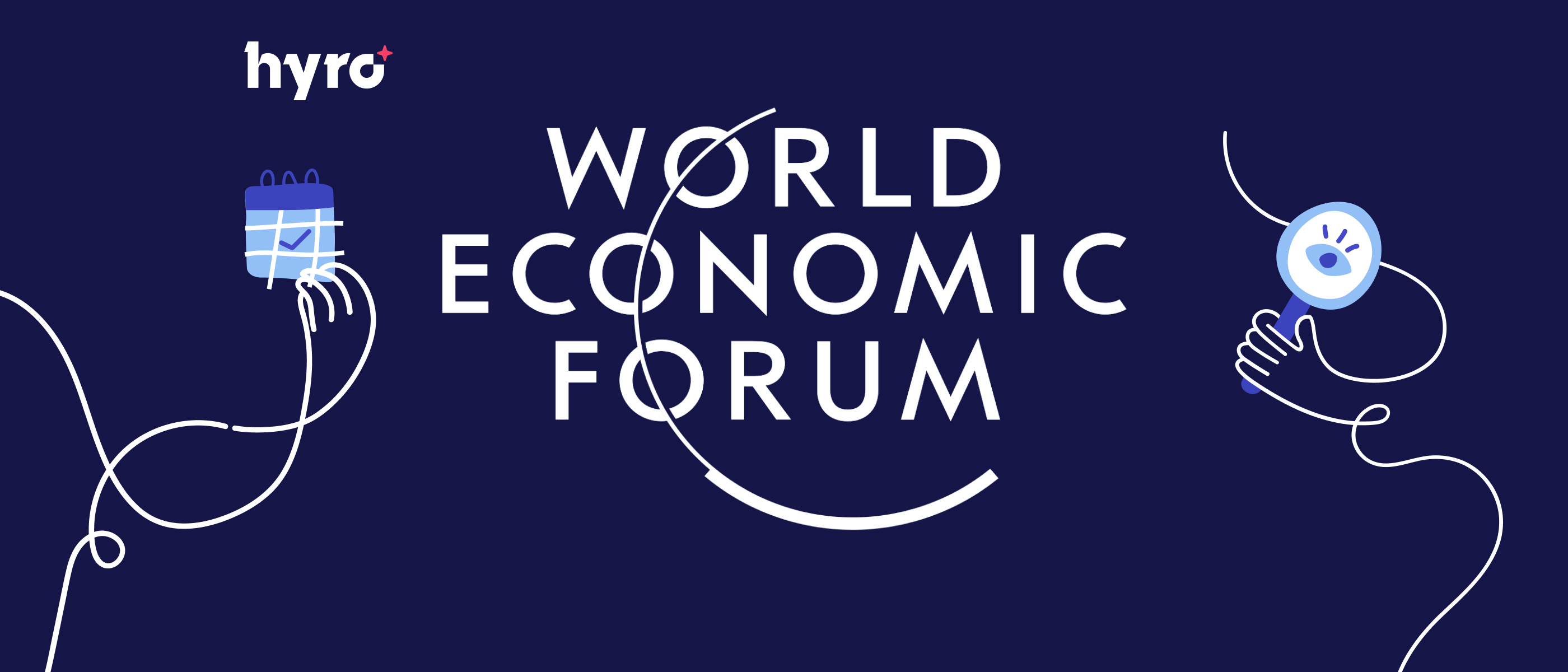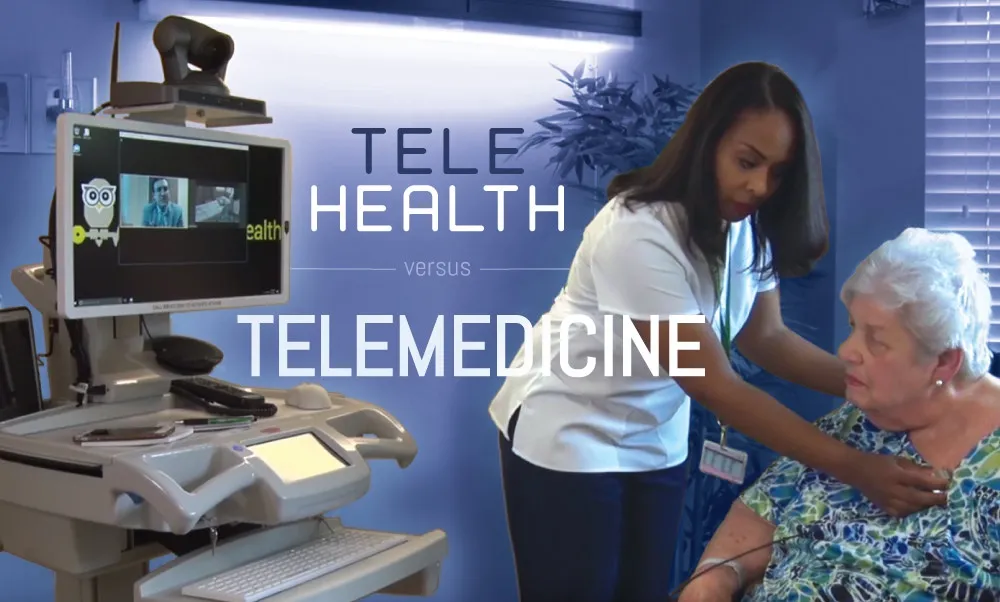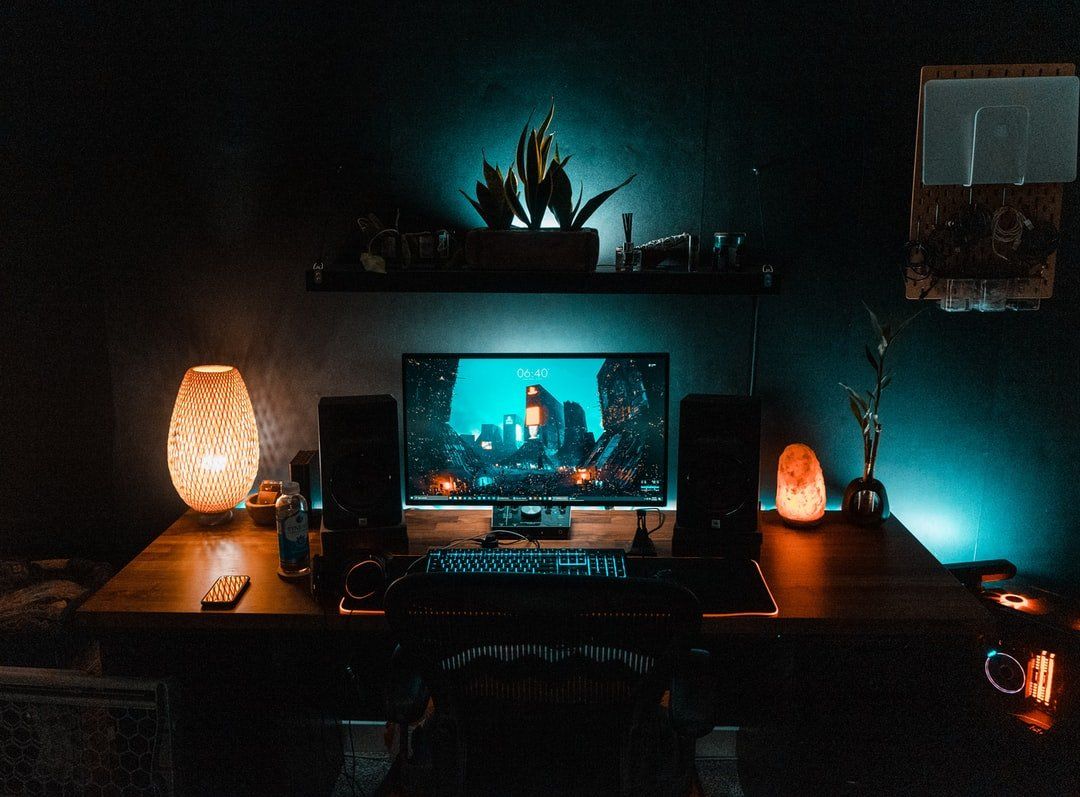
 Medicine is taking a turn from physical to digital - by 2025, the digital therapeutics market is projected to hit $7.8 billion. The uses of digital therapeutics range wildly from alleviating symptoms of physiological and neurobehavioral symptoms to therapeutic interventions driven by software and tech to therapies to improve outcomes when combined with regular treatments. They also offer new options to those who have otherwise unmet needs, and can help reduce reliance on medication. Digital therapeutics can also be used in the treatment of diabetes, obesity, cardiovascular, central nervous, respiratory, and gastrointestinal problems.
Medicine is taking a turn from physical to digital - by 2025, the digital therapeutics market is projected to hit $7.8 billion. The uses of digital therapeutics range wildly from alleviating symptoms of physiological and neurobehavioral symptoms to therapeutic interventions driven by software and tech to therapies to improve outcomes when combined with regular treatments. They also offer new options to those who have otherwise unmet needs, and can help reduce reliance on medication. Digital therapeutics can also be used in the treatment of diabetes, obesity, cardiovascular, central nervous, respiratory, and gastrointestinal problems.
 An infographic on the future of tech and empathy that will fuel the senior care and nursing home space.
An infographic on the future of tech and empathy that will fuel the senior care and nursing home space.
 Chicago-based MedTech expert, Tim Murawski discusses advancements in medical technology in regard to heart health.
Chicago-based MedTech expert, Tim Murawski discusses advancements in medical technology in regard to heart health.
 Scientists in Singapore have invented a disinfecting robot that imitates human gestures to help cleaning staff overwhelmed since the start of the coronavirus crisis. The "XDBOT" is a rectangular box-shaped robot mounted on wheels and armed with an articulated arm which can be operated remotely. He can reach places that are difficult to clean with great dexterity, such as the space under beds or tables.
Scientists in Singapore have invented a disinfecting robot that imitates human gestures to help cleaning staff overwhelmed since the start of the coronavirus crisis. The "XDBOT" is a rectangular box-shaped robot mounted on wheels and armed with an articulated arm which can be operated remotely. He can reach places that are difficult to clean with great dexterity, such as the space under beds or tables.
 Sumondo was nominated as one of the best startups in Copenhagen, Denmark, in HackerNoon’s Startups of the Year. This is an interview with their Founder CEO.
Sumondo was nominated as one of the best startups in Copenhagen, Denmark, in HackerNoon’s Startups of the Year. This is an interview with their Founder CEO.
 Learn more about Epha.health, an AI-powered service to improve medication and prevent complications from their CEO Marco Egbring
Learn more about Epha.health, an AI-powered service to improve medication and prevent complications from their CEO Marco Egbring
 Understanding Continuous Glucose Monitoring: A Guide to CGM Devices, and how developers can build solutions on such data
Understanding Continuous Glucose Monitoring: A Guide to CGM Devices, and how developers can build solutions on such data
 Mental health technology is a subject of controversy. This post tends to assess the existing potential of new healthcare tech for mental health treatment,
Mental health technology is a subject of controversy. This post tends to assess the existing potential of new healthcare tech for mental health treatment,
 A look at how blockchain and healthcare go hand in hand.
A look at how blockchain and healthcare go hand in hand.
 Victa is the first AI gaming walking and running app that uses content to motivate users to take up a healthier lifestyle. This is our journey.
Victa is the first AI gaming walking and running app that uses content to motivate users to take up a healthier lifestyle. This is our journey.
 Thrilled to be recognized because I-Ally is a labor of love.
Thrilled to be recognized because I-Ally is a labor of love.
 With an ever-expanding list of potential applications, 3D printing has already started transforming some of the largest industries in the world.
With an ever-expanding list of potential applications, 3D printing has already started transforming some of the largest industries in the world.
 The healthcare industry is going through a digital transformation that will be as significant as the advent of antibiotics or the introduction of vaccines.
The healthcare industry is going through a digital transformation that will be as significant as the advent of antibiotics or the introduction of vaccines.
 Telehealth has made the quality of care better for nursing home residents. Learn more about how the digital health transformation is changing the game.
Telehealth has made the quality of care better for nursing home residents. Learn more about how the digital health transformation is changing the game.
 I had the privilege this week to attend the second annual HLTH Conference in Las Vegas. In between fangirling over two of my Healthcare Heros who were in attendance (shout out to Dr. John Halamka & Dr. Ezekiel Emanuel!), I learned a ton and was challenged to question whether the proliferation of healthcare startups is net positive.
I had the privilege this week to attend the second annual HLTH Conference in Las Vegas. In between fangirling over two of my Healthcare Heros who were in attendance (shout out to Dr. John Halamka & Dr. Ezekiel Emanuel!), I learned a ton and was challenged to question whether the proliferation of healthcare startups is net positive.
 To say that the Coronavirus is leaving an incredible impact on the world today would be a gross understatement.
To say that the Coronavirus is leaving an incredible impact on the world today would be a gross understatement.
 This Slack discussion by Sadia Mehmood, BitcoinPetar, Rianke Krugel, anthony watson and Utsav Jaiswal occurred in slogging's official #introductions channel, and has been edited for readability.
This Slack discussion by Sadia Mehmood, BitcoinPetar, Rianke Krugel, anthony watson and Utsav Jaiswal occurred in slogging's official #introductions channel, and has been edited for readability.
 Artificial Intelligence (AI) has taken the forefront of conversations from employers across the globe. AI is helping organizations make incredible strides in efficiently handling mundane and repetitive tasks and freeing up valuable time and thought space that employees can use to exercise more creativity, solve complex problems, and otherwise focus on the bigger picture.
Artificial Intelligence (AI) has taken the forefront of conversations from employers across the globe. AI is helping organizations make incredible strides in efficiently handling mundane and repetitive tasks and freeing up valuable time and thought space that employees can use to exercise more creativity, solve complex problems, and otherwise focus on the bigger picture.
 A look at the disconnected world of healthcare payments, including a convenient infographic to illustrate the issues.
A look at the disconnected world of healthcare payments, including a convenient infographic to illustrate the issues.
 Covid-19 coronavirus reports change daily and even hourly. The public health emergency has already swept the whole world: the virus threatens people's lives, affects business and interferes with travel.
Covid-19 coronavirus reports change daily and even hourly. The public health emergency has already swept the whole world: the virus threatens people's lives, affects business and interferes with travel.
 Now that Americans theoretically have instant access to their medical records, digital health platforms must ensure they secure this data.
Now that Americans theoretically have instant access to their medical records, digital health platforms must ensure they secure this data.
 Logan Koshenka from the US has been nominated for a 2020 #Noonie in the Future Heroes category for his beautifully built side project, a Health and Wellness app called Accufit. PSA: Nominations for this award are still open..! Get the Health and Wellness App you can't live without nominated for a Noonie today ➡️ make a Founder's day.
Logan Koshenka from the US has been nominated for a 2020 #Noonie in the Future Heroes category for his beautifully built side project, a Health and Wellness app called Accufit. PSA: Nominations for this award are still open..! Get the Health and Wellness App you can't live without nominated for a Noonie today ➡️ make a Founder's day.
 Everything is easily accessible when your home is in a city.
Everything is easily accessible when your home is in a city.
 ML, AI, VR, AR, MR, IoMT: read about technological trends of healthcare and medical apps development in the coming year!
ML, AI, VR, AR, MR, IoMT: read about technological trends of healthcare and medical apps development in the coming year!
 AI is disrupting the entire cannabis industry using big data and machine learning, optimizing each step from production to distribution.
AI is disrupting the entire cannabis industry using big data and machine learning, optimizing each step from production to distribution.
 Explore how HealthTech is revolutionizing the way we diagnose, treat, and prevent illnesses. From telemedicine to AI, learn how technology is improving patient.
Explore how HealthTech is revolutionizing the way we diagnose, treat, and prevent illnesses. From telemedicine to AI, learn how technology is improving patient.
 Peace speaks with Tito Ovia, co-founder of Helium Health, a health-tech provider in Nigeria set to digitize hospital processes within the continent.
Peace speaks with Tito Ovia, co-founder of Helium Health, a health-tech provider in Nigeria set to digitize hospital processes within the continent.
 As the digital health wagon moves on, patients are starting to take the lead thanks to health wearables, better communication with doctors and new technology.
As the digital health wagon moves on, patients are starting to take the lead thanks to health wearables, better communication with doctors and new technology.
 Interview with I-Ally Founder Lucinda Koza where reveals she wants to save millennial family caregivers from a broken system
Interview with I-Ally Founder Lucinda Koza where reveals she wants to save millennial family caregivers from a broken system
 The use of Artificial Intelligence (AI) is surging, and one area in which its use is even more important in 2020 – the year of a global pandemic – is in health technology, or healthtech.
The use of Artificial Intelligence (AI) is surging, and one area in which its use is even more important in 2020 – the year of a global pandemic – is in health technology, or healthtech.
 With healthcare apps and wearables that gather customer PHI, healthtech companies need a data privacy vault to ensure HIPAA compliance and build customer trust.
With healthcare apps and wearables that gather customer PHI, healthtech companies need a data privacy vault to ensure HIPAA compliance and build customer trust.
 Consumer CBD sales are expected to reach $1.8 billion by 2022, an amazing increase from their 2018 total of $500,000, according to Statista. More than a decade from now, the market for CBD products is expected to be worth an incredible $75 billion, according to other studies.CBD farming, in contrast to conventional farming, necessitates the use of sophisticated machinery and equipment capable of doing numerous functions at once, such as plowing, seeding, and excavating. They also have devices that assist in collecting hemp flowers since CBD growing requires precise measurements in water and air quality as well as soil moisture and temperature. In this article, we will explore the role that technology is playing in promoting CBD and Healthcare businesses around the world.
Consumer CBD sales are expected to reach $1.8 billion by 2022, an amazing increase from their 2018 total of $500,000, according to Statista. More than a decade from now, the market for CBD products is expected to be worth an incredible $75 billion, according to other studies.CBD farming, in contrast to conventional farming, necessitates the use of sophisticated machinery and equipment capable of doing numerous functions at once, such as plowing, seeding, and excavating. They also have devices that assist in collecting hemp flowers since CBD growing requires precise measurements in water and air quality as well as soil moisture and temperature. In this article, we will explore the role that technology is playing in promoting CBD and Healthcare businesses around the world.
 Thousands of COVID-19 deaths have been linked to nursing home residents or their caregivers - but COVID-19 isn’t stopping there. Though hundreds of thousands have been infected, efforts taken by governments such as social distancing have been proven to work. Looking at and comparing cities of similar sizes who enacted social distancing guidelines at different times can give us some insight on how well social distancing works.
Thousands of COVID-19 deaths have been linked to nursing home residents or their caregivers - but COVID-19 isn’t stopping there. Though hundreds of thousands have been infected, efforts taken by governments such as social distancing have been proven to work. Looking at and comparing cities of similar sizes who enacted social distancing guidelines at different times can give us some insight on how well social distancing works.
 Nanotechnology is the frontier of modern medicine, but it has already been in use almost two decades. PillCams were first approved by the FDA in 2001, and by 2008 they had already been used in more than 2 million procedures. By 2024 nanotechnology will be a $125 billion global industry. So what’s next in the world of medical nanotechnology?
Nanotechnology is the frontier of modern medicine, but it has already been in use almost two decades. PillCams were first approved by the FDA in 2001, and by 2008 they had already been used in more than 2 million procedures. By 2024 nanotechnology will be a $125 billion global industry. So what’s next in the world of medical nanotechnology?
 How much data does a hospital produce each day? How much information are they capable of storing, analyzing, and sharing with physicians and patients?
How much data does a hospital produce each day? How much information are they capable of storing, analyzing, and sharing with physicians and patients?
 Last year I found I had ADD.
Last year I found I had ADD.
 Big data is transforming decision-making in healthcare and this article explores how it can be used to improve patient care, as well as its challenges.
Big data is transforming decision-making in healthcare and this article explores how it can be used to improve patient care, as well as its challenges.
 The booming immunohistochemistry (IHC) sector of healthcare requires more technicians than the market has to offer. That's where automation comes in.
The booming immunohistochemistry (IHC) sector of healthcare requires more technicians than the market has to offer. That's where automation comes in.
 Coronavirus: the alarming threat creates mayhem in the lives of many. Despite the terrifying conditions, technologies such as artificial intelligence and big data are mending ways of detecting an outbreak.
Coronavirus: the alarming threat creates mayhem in the lives of many. Despite the terrifying conditions, technologies such as artificial intelligence and big data are mending ways of detecting an outbreak.
 3 apps to enhance your fitness routine, from a fitness lover
3 apps to enhance your fitness routine, from a fitness lover
 My startup is called BreatheIO which is a Smart Air Purifier, that utilizes the power of Artificial Intelligence to reduce and control the Air Pollution
My startup is called BreatheIO which is a Smart Air Purifier, that utilizes the power of Artificial Intelligence to reduce and control the Air Pollution
 Learn more about cloud computing architecture and its types, as well as how SaaS platforms can benefit the healthcare system by streamlining IT processes.
Learn more about cloud computing architecture and its types, as well as how SaaS platforms can benefit the healthcare system by streamlining IT processes.
 Startup Interview with Naveen Jain, Viome Founder and CEO.
Startup Interview with Naveen Jain, Viome Founder and CEO.
 A look at the advent of pneumatic tube systems, and how they keep things running at peak performance in hospital settings.
A look at the advent of pneumatic tube systems, and how they keep things running at peak performance in hospital settings.
 What are the essential features of Medical Practice Management Software? What is MPMS itself? Which systems build MPMS? Find out here!
What are the essential features of Medical Practice Management Software? What is MPMS itself? Which systems build MPMS? Find out here!
 The field of radiology is littered with cyber mines. And it only gets worse. Here are some real stories of hospital cyberattacks and expert recommendations.
The field of radiology is littered with cyber mines. And it only gets worse. Here are some real stories of hospital cyberattacks and expert recommendations.
 AI saves a lot of resources in modern drug discovery. Also, it brings better accuracy greatly influencing patients' lives.
AI saves a lot of resources in modern drug discovery. Also, it brings better accuracy greatly influencing patients' lives.
 Personal medical device integration with telemedicine application
Personal medical device integration with telemedicine application
 AI technology is advancing very fast. Organizations have to derive advantages of new technologies by adopting and integrating them into their business processes. Healthcare industry seems to be moving in a right direction by adopting artificial intelligence technology. The reason behind adopting AI technology is to provide an accurate and quality healthcare to patients.
AI technology is advancing very fast. Organizations have to derive advantages of new technologies by adopting and integrating them into their business processes. Healthcare industry seems to be moving in a right direction by adopting artificial intelligence technology. The reason behind adopting AI technology is to provide an accurate and quality healthcare to patients.
 Pairing Emotion AI with Live Video calling can bring a dramatic improvement in healthcare delivery whether its doctor-patient communication or mental wellbeing.
Pairing Emotion AI with Live Video calling can bring a dramatic improvement in healthcare delivery whether its doctor-patient communication or mental wellbeing.
 For the first time in medical history, it was recorded that some robots successfully carried out a laparoscopic surgery unaided by humans.
For the first time in medical history, it was recorded that some robots successfully carried out a laparoscopic surgery unaided by humans.
 Let’s explore how technology can help global healthcare providers to recover from such a significant historical event.
Let’s explore how technology can help global healthcare providers to recover from such a significant historical event.
 Read this article to learn more about AI potential in the healthcare industry.
Read this article to learn more about AI potential in the healthcare industry.
 A look at the growing problem of kidney failure and how a better system of implementation could change the health outcomes of our most vulnerable populations.
A look at the growing problem of kidney failure and how a better system of implementation could change the health outcomes of our most vulnerable populations.
 Back in 2013, the World Healthcare Organization (WHO) predicted that the global healthcare worker shortage could reach 12.9 million professionals by 2035, making in-person medical appointments a luxury few patients can afford. And the COVID-19 pandemic has only aggravated things.While telehealth and remote patient monitoring (RPM) solutions slightly lessen the burden on the US health sector, a 6,000% growth in telemedicine usage has put a strain on medical personnel who manually process claims, enter data into electronic health records, and interact with patients through digital channels.Wide-scale adoption of robotic process automation (RPA) solutions in healthcare may cure medical system inefficiencies. Here’s how.
Back in 2013, the World Healthcare Organization (WHO) predicted that the global healthcare worker shortage could reach 12.9 million professionals by 2035, making in-person medical appointments a luxury few patients can afford. And the COVID-19 pandemic has only aggravated things.While telehealth and remote patient monitoring (RPM) solutions slightly lessen the burden on the US health sector, a 6,000% growth in telemedicine usage has put a strain on medical personnel who manually process claims, enter data into electronic health records, and interact with patients through digital channels.Wide-scale adoption of robotic process automation (RPA) solutions in healthcare may cure medical system inefficiencies. Here’s how.
 At this point, it's undeniable just how much the COVID-19 pandemic has influenced the use of technology among older generations.
At this point, it's undeniable just how much the COVID-19 pandemic has influenced the use of technology among older generations.
 Discover some of the top healthcare software development companies to work with and understand the crucial factors to consider when choosing the right one.
Discover some of the top healthcare software development companies to work with and understand the crucial factors to consider when choosing the right one.
 In this article, we’ve aggregated our best advice and insights for evaluating healthcare software development companies.
In this article, we’ve aggregated our best advice and insights for evaluating healthcare software development companies.
 A look at how improving the healthcare insurance data capture system will improve through OCR and AI card scan.
A look at how improving the healthcare insurance data capture system will improve through OCR and AI card scan.
 While the healthcare industry seemed to contain the virus in 2022, the major fallout COVID-19 had on the healthcare supply chain is still yet to be tackled.
While the healthcare industry seemed to contain the virus in 2022, the major fallout COVID-19 had on the healthcare supply chain is still yet to be tackled.
 Today in the world of open-source ventilators, the game changed.
Today in the world of open-source ventilators, the game changed.
 My name is Sam Adetunji and I am one of the co-founders of Veriheal, an innovative cannatech company, and cannabis patient support system.
My name is Sam Adetunji and I am one of the co-founders of Veriheal, an innovative cannatech company, and cannabis patient support system.
 ::: To efficiently and effectively resolve hospital bed and hospital staff housing deficits nationwide, cargo architecture firm Three Squared designs two custom-outfitted mobile shipping container units—one housing multiple hospital beds for patients, another for housing attending medical staff—complete with electrical and full bathrooms :::
::: To efficiently and effectively resolve hospital bed and hospital staff housing deficits nationwide, cargo architecture firm Three Squared designs two custom-outfitted mobile shipping container units—one housing multiple hospital beds for patients, another for housing attending medical staff—complete with electrical and full bathrooms :::
 As the saying goes, it’s impossible to put a price on your health.
As the saying goes, it’s impossible to put a price on your health.
 Clinics and medical centers have significantly evolved thanks to the implementation of IoT solutions. In this article, we’ll discuss which healthcare problems IoT can solve, how the clinics and hospitals can benefit from using IoT, and why IoT development in healthcare is worth investing in.
Clinics and medical centers have significantly evolved thanks to the implementation of IoT solutions. In this article, we’ll discuss which healthcare problems IoT can solve, how the clinics and hospitals can benefit from using IoT, and why IoT development in healthcare is worth investing in.
 The embracement of technology is a two-sided process and doctors need patient support in order to completely change.
The embracement of technology is a two-sided process and doctors need patient support in order to completely change.
 Explore how Remote Patient Monitoring technology is changing the healthcare industry, its benefits for doctors and patients, and it applications.
Explore how Remote Patient Monitoring technology is changing the healthcare industry, its benefits for doctors and patients, and it applications.
 Every individual does their best to live a healthy life in their little way. Whether it be eating right, or maintaining proper hygiene.
Every individual does their best to live a healthy life in their little way. Whether it be eating right, or maintaining proper hygiene.
 What started as a less harmful alternative to smoking has become one of the biggest health crises in the United States; vaping. Despite the decades of anti-smoking campaigns pushed by public health groups, vaping became increasingly popular. According to a Gallup survey, nearly 8 percent of Americans vaped, and almost one in five 18 to 29-year-olds reported vaping regularly.
What started as a less harmful alternative to smoking has become one of the biggest health crises in the United States; vaping. Despite the decades of anti-smoking campaigns pushed by public health groups, vaping became increasingly popular. According to a Gallup survey, nearly 8 percent of Americans vaped, and almost one in five 18 to 29-year-olds reported vaping regularly.
 We are simple software developers, so we are interested in technologies for healthtech. Let’s try to answer popular questions and give tech stack examples.
We are simple software developers, so we are interested in technologies for healthtech. Let’s try to answer popular questions and give tech stack examples.
 The major recent breakthroughs in diagnostics and treatment.
The major recent breakthroughs in diagnostics and treatment.
 There are thousands of health-related apps that aren't helping people reach their intended health goals. At their worst, some of the apps actually doharm.
There are thousands of health-related apps that aren't helping people reach their intended health goals. At their worst, some of the apps actually doharm.
 The telemedicine industry is expected to create a more than $5.4 Bn market opportunity by 2025. While the growth has been slow in the past years, the demands for medical advice and the restrictions on movement during the outbreak of COVID-19 have renewed the need for, and interest in, applications that enable healthcare at home.
The telemedicine industry is expected to create a more than $5.4 Bn market opportunity by 2025. While the growth has been slow in the past years, the demands for medical advice and the restrictions on movement during the outbreak of COVID-19 have renewed the need for, and interest in, applications that enable healthcare at home.
 In this interview with Balder Onarheim, co-founder and CEO of PlatoScience we explore the advances in neurostimulation (Transcranial Electrical Stimulation, TES) and how it can be used to enhance focus and creativity.
In this interview with Balder Onarheim, co-founder and CEO of PlatoScience we explore the advances in neurostimulation (Transcranial Electrical Stimulation, TES) and how it can be used to enhance focus and creativity.
Can you give a quick background about you and how you got to this technology?
 A new technological cancer research breakthrough presented at ASCO 2022 promises precision targeting of cancer cells and eliminating of terrible side effects.
A new technological cancer research breakthrough presented at ASCO 2022 promises precision targeting of cancer cells and eliminating of terrible side effects.
 ‘If you are not failing you are not trying hard enough.’
‘If you are not failing you are not trying hard enough.’

 Today, most people with diabetes opt to deal with their condition with the help of a continuous glucose monitor or CGMs. Since finger prick testing is not really convenient, CGMs are a great option. And they give a surge of information nonstop as well. However, most data is useless unless the right tools are used to analyze it.
Today, most people with diabetes opt to deal with their condition with the help of a continuous glucose monitor or CGMs. Since finger prick testing is not really convenient, CGMs are a great option. And they give a surge of information nonstop as well. However, most data is useless unless the right tools are used to analyze it.
 In a very simple language, I would like to explain what cremation is and how technology is playing a crucial role in the death industry.
In a very simple language, I would like to explain what cremation is and how technology is playing a crucial role in the death industry.
 DNA Technology has multiple applications in medicine that make disease prevention, diagnosis and treatment easier and more personalised for every patient.
DNA Technology has multiple applications in medicine that make disease prevention, diagnosis and treatment easier and more personalised for every patient.
 Thanks to these healthcare technology trends, our medical infrastructures are evolving to fight pandemic-level viruses in the most efficient manner possible.
Thanks to these healthcare technology trends, our medical infrastructures are evolving to fight pandemic-level viruses in the most efficient manner possible.
 The World Economic Forum is mostly known for its highly anticipated annual meeting in Davos, Switzerland — a scene of global intrigue and a convergence point for the planet’s most influential politicians, investors, activists, CEOs, and economists.
The World Economic Forum is mostly known for its highly anticipated annual meeting in Davos, Switzerland — a scene of global intrigue and a convergence point for the planet’s most influential politicians, investors, activists, CEOs, and economists.
 Ever since technology was introduced into the business world, there has been a massive change in the fortunes of business sectors. So much so, that every established business sectors and upcoming sector, look to technology to either scale them up or maintain equilibrium, or in case of emerging companies, give them that initial push so that they can get
to the autopilot mode.
Ever since technology was introduced into the business world, there has been a massive change in the fortunes of business sectors. So much so, that every established business sectors and upcoming sector, look to technology to either scale them up or maintain equilibrium, or in case of emerging companies, give them that initial push so that they can get
to the autopilot mode.
 These times are hard and achieving good health may seem difficult, but it is possible to achieve your wellness goals. Find out more about wellness here.
These times are hard and achieving good health may seem difficult, but it is possible to achieve your wellness goals. Find out more about wellness here.
 This article details my $0 biohacking journey to ultra-marathons, health, fitness, and more
This article details my $0 biohacking journey to ultra-marathons, health, fitness, and more

 As Europe and the US are bracing for the worst of COVID-19, life in China is gradually going back to normal. Aside from lockdowns and social distancing, what can we learn from the measures taken to control the outbreak, and how life can resume safely?
As Europe and the US are bracing for the worst of COVID-19, life in China is gradually going back to normal. Aside from lockdowns and social distancing, what can we learn from the measures taken to control the outbreak, and how life can resume safely?
 Soon after COVID-19 hit the world, hospitals across the country started quickly filling up with new patients and forcing some of the long-term care patients out of hospitals. Most of those long-term care patients now can’t go to hospitals due to how vulnerable they are to getting COVID-19. In order to still receive the attention and care that they need, many have turned to telemedicine. Technologies like video conferencing, data monitoring, and smartphone apps that are used to help keep and eye on and treat patients have all seen usage start to spike. CareClix, a virtual health company which has over 20 million users, saw a 50% rise in usage in March alone and Zipnosis, another virtual health company, reported a 3,600% increase in virtual visits over the course of just 11 days in February. The idea of telehealth is not a new concept - as early as 1924, Radio New Magazine featured an illustration of a physician attending to his patient via video. In 1967, the University of Miami’s medical school worked with the local fire department to help set up a system where emergency patient info could be transferred remotely.
Soon after COVID-19 hit the world, hospitals across the country started quickly filling up with new patients and forcing some of the long-term care patients out of hospitals. Most of those long-term care patients now can’t go to hospitals due to how vulnerable they are to getting COVID-19. In order to still receive the attention and care that they need, many have turned to telemedicine. Technologies like video conferencing, data monitoring, and smartphone apps that are used to help keep and eye on and treat patients have all seen usage start to spike. CareClix, a virtual health company which has over 20 million users, saw a 50% rise in usage in March alone and Zipnosis, another virtual health company, reported a 3,600% increase in virtual visits over the course of just 11 days in February. The idea of telehealth is not a new concept - as early as 1924, Radio New Magazine featured an illustration of a physician attending to his patient via video. In 1967, the University of Miami’s medical school worked with the local fire department to help set up a system where emergency patient info could be transferred remotely.
 As our lives are suddenly and drastically changed by the rapid spread of this virus, and my local stores are ignorantly devoid of toilet paper and vodka from panic buying, I reflected on a few societal changes we might see taking place.
As our lives are suddenly and drastically changed by the rapid spread of this virus, and my local stores are ignorantly devoid of toilet paper and vodka from panic buying, I reflected on a few societal changes we might see taking place.
 When asked to name a paragon of technology-life balance, most people wouldn’t reflexively answer, professional gamer.
When asked to name a paragon of technology-life balance, most people wouldn’t reflexively answer, professional gamer.
 What are the top 5 tech startups that are driving the medical marijuana industry? Read to learn more.
What are the top 5 tech startups that are driving the medical marijuana industry? Read to learn more.
 Does your eyes get dry or watery while staring at a screen? Or do you experience headaches when looking at a screen? Do you feel itchiness on your eyes?
Does your eyes get dry or watery while staring at a screen? Or do you experience headaches when looking at a screen? Do you feel itchiness on your eyes?
 The Femtech market is booming, presenting enticing opportunities across the board. But challenges remain. Read about the latest Femtech trends!
The Femtech market is booming, presenting enticing opportunities across the board. But challenges remain. Read about the latest Femtech trends!
 In today’s data-driven era, most companies operate with an aim to become smarter, by taking advantage of market opportunities. With the help of advanced technologies, companies are making improvements in their processes.
In today’s data-driven era, most companies operate with an aim to become smarter, by taking advantage of market opportunities. With the help of advanced technologies, companies are making improvements in their processes.
 Artificial intelligence and healthcare have long been friends. That friendship has grown to include even gene-editing thanks to AI helping with CRISPR errors.
Artificial intelligence and healthcare have long been friends. That friendship has grown to include even gene-editing thanks to AI helping with CRISPR errors.
 Though data management presents a challenge to most industries, technological advancements have been able to mitigate some of these challenges. Healthcare is also one of the industries that constantly adopts new ways to solve challenges. Trial and error in the clinical sphere proved that data accuracy, accessibility, storage, and retention must be approached with the utmost care. As part of healthcare ever-evolving data management challenges, technology has helped make information an easier aspect of the medical staff’s responsibilities.
Though data management presents a challenge to most industries, technological advancements have been able to mitigate some of these challenges. Healthcare is also one of the industries that constantly adopts new ways to solve challenges. Trial and error in the clinical sphere proved that data accuracy, accessibility, storage, and retention must be approached with the utmost care. As part of healthcare ever-evolving data management challenges, technology has helped make information an easier aspect of the medical staff’s responsibilities.
 Why HL7 FHIR standards are important in healthcare products development
Why HL7 FHIR standards are important in healthcare products development
 Healthcare has more than its fair share of monotonous, time-consuming tasks that prevent employees from focusing on more productive activities.
Healthcare has more than its fair share of monotonous, time-consuming tasks that prevent employees from focusing on more productive activities.
 At this moment, there are thousands of intelligent, diligent, well-meaning engineers trying to help the design of open source ventilators to address a possibly imminent life-threatening shortage caused by the COVID-19 pandemic. This wealth of creative technical energy is currently disorganized, scattered, and unfocused. Rather than being a tremendous force for saving lives that it may become, energy and time is currently being wasted on oversimplifications of the problem and the belief that the projects are closer to deployable than they really are.
At this moment, there are thousands of intelligent, diligent, well-meaning engineers trying to help the design of open source ventilators to address a possibly imminent life-threatening shortage caused by the COVID-19 pandemic. This wealth of creative technical energy is currently disorganized, scattered, and unfocused. Rather than being a tremendous force for saving lives that it may become, energy and time is currently being wasted on oversimplifications of the problem and the belief that the projects are closer to deployable than they really are.
 Together with the rise of the Internet, access to large repositories of data has helped machine learning technology grow exponentially. The incredibly quick pace of growth was unprecedented. As a result, it is obvious that AI will make a significant impact on the world in the years to come. However, with the numerous established and emerging fields of AI around today, such a blanket statement doesn’t provide much concrete meaning.
Together with the rise of the Internet, access to large repositories of data has helped machine learning technology grow exponentially. The incredibly quick pace of growth was unprecedented. As a result, it is obvious that AI will make a significant impact on the world in the years to come. However, with the numerous established and emerging fields of AI around today, such a blanket statement doesn’t provide much concrete meaning.
 You’re probably familiar with the movie Moneyball (if not, watch it!). It’s the story of Billy Beane, the former MLB player and manager of the Oakland A’s, a struggling team with one of the smallest budgets in the league. Using statistical analysis methods, he ditched all traditional advice and based recruitment purely on data. The result? The A’s won 20 consecutive games, the first team in over a century to do so.
You’re probably familiar with the movie Moneyball (if not, watch it!). It’s the story of Billy Beane, the former MLB player and manager of the Oakland A’s, a struggling team with one of the smallest budgets in the league. Using statistical analysis methods, he ditched all traditional advice and based recruitment purely on data. The result? The A’s won 20 consecutive games, the first team in over a century to do so.
 We recommend tools, approaches, and methodologies to build a competitive marketing strategy to make people fall in love with your digital health solution.
We recommend tools, approaches, and methodologies to build a competitive marketing strategy to make people fall in love with your digital health solution.
 Imagine you go to the doctor to get treatment for a disease and instead of giving you a pill or a shot, the doctor refers you to a special medical team which implants a tiny robot into your bloodstream.
Imagine you go to the doctor to get treatment for a disease and instead of giving you a pill or a shot, the doctor refers you to a special medical team which implants a tiny robot into your bloodstream.
 One in five Americans controls their health with the help of fitness trackers or apps. During the first two quarters of 2020, there were over 1.2 billion downloads of health and fitness apps. These facts indicate that people are interested in platforms that will allow them to track vital signs, control nutrition, and remotely communicate with doctors. Before starting a healthcare software project, a medical facility should decide what type of medical platform its target audience needs. Let’s take a look at the most popular apps and options for their use.
One in five Americans controls their health with the help of fitness trackers or apps. During the first two quarters of 2020, there were over 1.2 billion downloads of health and fitness apps. These facts indicate that people are interested in platforms that will allow them to track vital signs, control nutrition, and remotely communicate with doctors. Before starting a healthcare software project, a medical facility should decide what type of medical platform its target audience needs. Let’s take a look at the most popular apps and options for their use.
 With June estimates at 7000+ authors, 69 other Hackernoon contributors might also be a victim of schizophrenia, along with me. This article serves to demonstrate why these people are facing tougher-than-average odds to live to a ripe old age, and how society isn’t doing them justice in helping or finding a permanent solution.
With June estimates at 7000+ authors, 69 other Hackernoon contributors might also be a victim of schizophrenia, along with me. This article serves to demonstrate why these people are facing tougher-than-average odds to live to a ripe old age, and how society isn’t doing them justice in helping or finding a permanent solution.
 Having just moved to the Tampa Bay region from Dayton, Ohio as the COVID-19 pandemic continued to worsen, I of course had to immerse myself in the ever-growing tech hub that is the Tampa Bay area of Florida.
Having just moved to the Tampa Bay region from Dayton, Ohio as the COVID-19 pandemic continued to worsen, I of course had to immerse myself in the ever-growing tech hub that is the Tampa Bay area of Florida.
 The development of blockchain-based projects in healthcare and pharmaceuticals is bound to make unprecedented leaps across the sector.
The development of blockchain-based projects in healthcare and pharmaceuticals is bound to make unprecedented leaps across the sector.
 Logan Koshenka is a software engineer who graduated from Ohio University in 2018 and founded AccuFit, a custom workout app.
Logan Koshenka is a software engineer who graduated from Ohio University in 2018 and founded AccuFit, a custom workout app.
 When thinking of robotics and AI in healthcare, robotic surgery and exoskeletons are what probably comes to mind first. Yet in reality, there’s a multitude of other ways automation and machine learning are changing medical care practices at their core.
When thinking of robotics and AI in healthcare, robotic surgery and exoskeletons are what probably comes to mind first. Yet in reality, there’s a multitude of other ways automation and machine learning are changing medical care practices at their core.
 The Age of Exciting Opportunities
The Age of Exciting Opportunities
 Top healthcare software development companies in USA based on their case studies, client reviews & testimonials. 2023
Top healthcare software development companies in USA based on their case studies, client reviews & testimonials. 2023
 We are halfway through 2020. Self-evident truth makes it crystal clear that there is too much to swallow and digest to make sense of everything that is happening in our new reality. It is also important to mention that there is no doubt that the world will remember this year just like they remember 2012 when everyone was expecting the end of the world. But what happens after COVID-19? The Economist has its perspective:
We are halfway through 2020. Self-evident truth makes it crystal clear that there is too much to swallow and digest to make sense of everything that is happening in our new reality. It is also important to mention that there is no doubt that the world will remember this year just like they remember 2012 when everyone was expecting the end of the world. But what happens after COVID-19? The Economist has its perspective:
 Explore the latest technology trends that will shape the healthcare industry in 2022 and beyond.
Explore the latest technology trends that will shape the healthcare industry in 2022 and beyond.
 A month ago it would’ve been hard to imagine how life would change in what seems overnight. Quarantines have been declared in many countries, and already around one billion people are staying at home, isolating themselves and some working remotely. The public activities have stopped, drug stores are in deficit of protection masks, and food shops are being cleaned of even primary products.
A month ago it would’ve been hard to imagine how life would change in what seems overnight. Quarantines have been declared in many countries, and already around one billion people are staying at home, isolating themselves and some working remotely. The public activities have stopped, drug stores are in deficit of protection masks, and food shops are being cleaned of even primary products.
 The healthcare sector has been slow in adopting technology. However, times are changing, and an increasing number of patients want to benefit from digitalization. According to a recent survey by Accenture, 60% of respondents prefer to use technology for patient-provider communication. Consequently, digital healthcare solutions are gaining popularity.Particularly, this change is reflected in the growth of the patient engagement market. The global patient engagement solutions market size was valued at $15.1 billion in 2020, and it is estimated to expand at a CAGR of 21.4% by 2028. The US patient engagement technology market, meanwhile, is expected to reach $9.4 billion by 2023.
The healthcare sector has been slow in adopting technology. However, times are changing, and an increasing number of patients want to benefit from digitalization. According to a recent survey by Accenture, 60% of respondents prefer to use technology for patient-provider communication. Consequently, digital healthcare solutions are gaining popularity.Particularly, this change is reflected in the growth of the patient engagement market. The global patient engagement solutions market size was valued at $15.1 billion in 2020, and it is estimated to expand at a CAGR of 21.4% by 2028. The US patient engagement technology market, meanwhile, is expected to reach $9.4 billion by 2023.
 In the past decades, the Coronavirus (COVID-19) is one of the most infectious diseases to have spread on our planet Earth. As we have seen that this virus has already created havoc in the entire world, so it becomes necessary to take the help of technology, and here AI comes into the picture.
In the past decades, the Coronavirus (COVID-19) is one of the most infectious diseases to have spread on our planet Earth. As we have seen that this virus has already created havoc in the entire world, so it becomes necessary to take the help of technology, and here AI comes into the picture.
 Sonic resonance is a manifestation of energy that shatters targeted microscopic organisms, and potentially infected Coronavirus cells - without harming surrounding cells.
Sonic resonance is a manifestation of energy that shatters targeted microscopic organisms, and potentially infected Coronavirus cells - without harming surrounding cells.
 I recently shared an article called “The “Next Big Thing” in Technology : 20 Inventions That Will Change the World”, which got a few dozen thousand hits in the past couple of weeks. This calls for a sequel. The previous 20 technologies were specifically centered on the next 20 years of technology development; but there’s a lot more to unravel when looking beyond the near future, though certainty obviously decreases with time.
I recently shared an article called “The “Next Big Thing” in Technology : 20 Inventions That Will Change the World”, which got a few dozen thousand hits in the past couple of weeks. This calls for a sequel. The previous 20 technologies were specifically centered on the next 20 years of technology development; but there’s a lot more to unravel when looking beyond the near future, though certainty obviously decreases with time.
 Electromedical Products International, Inc. (EPI) has conducted extensive clinical research to come up with a solution using Brain Stimulation that can help patients ease Pain, Insomnia, Depression and Anxiety. Taking advantage of advances in electronics and computer technology Alpha-Stim brings the size and price down significantly for the CES device while improving efficacy and ease-of-use.
Electromedical Products International, Inc. (EPI) has conducted extensive clinical research to come up with a solution using Brain Stimulation that can help patients ease Pain, Insomnia, Depression and Anxiety. Taking advantage of advances in electronics and computer technology Alpha-Stim brings the size and price down significantly for the CES device while improving efficacy and ease-of-use.
 Big Data's value, popularity, and scale of usage in business today come from a few of the indisputable benefits it has to offer:
Big Data's value, popularity, and scale of usage in business today come from a few of the indisputable benefits it has to offer:
 An innovative approach to HIPAA compliant software development, using AI-based biometric solutions and advanced access control methods.
An innovative approach to HIPAA compliant software development, using AI-based biometric solutions and advanced access control methods.
 The global drug development market is worth more than 350 billion dollars a year, according to ClinicalTrials.gov, which includes the costs of running the studies in addition to the resources used.
The global drug development market is worth more than 350 billion dollars a year, according to ClinicalTrials.gov, which includes the costs of running the studies in addition to the resources used.
 AI has the potential to revolutionise healthcare, from improving diagnosis and treatment to boosting hospital workflows. So, what does the future look like?
AI has the potential to revolutionise healthcare, from improving diagnosis and treatment to boosting hospital workflows. So, what does the future look like?





















